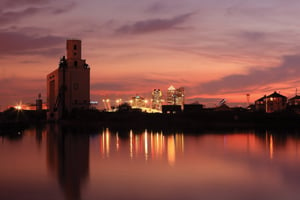Economic Eden
East London is home to a new Pleasure Garden. Garfield Hackett explains how he turned a derelict site into a hub for creativity and leisure, and a commercial prospect for the local community

Every city has them: derelict spaces, wastelands and forgotten gaps in the urban sprawl. These places are often beautiful, usually full of history and almost always have incredible potential. Yet for some reason they fall through the cracks in the regeneration process. London Pleasure Gardens was conceived as a way of turning one of these sites into something both useful and beautiful – a 21st century update of the classic Pleasure Garden concept. We wanted to turn this wasted space not only into a commercial proposition, in terms of a fully functional event space, but also a focus for creativity and leisure in the local community and across London as a whole.
We’re working in co-operation with Newham Council and it’s very important that we create jobs, fuel community cohesion and boost future regeneration of the Royal Docks and the Borough. Although the project involves and incorporates the community in a way that aims to benefit it as much as possible, it is not a standard community project. We receive funding on a commercial loan basis. This means we have the cash to create some incredible cultural experiences for London, but those cultural experiences also have a commercial responsibility: they need to generate revenue in order to pay the council back with interest.
If you’re making really popular art that’s bringing culture to those outside the gallery circuit, then a good way to check that you are actually getting people through the doors is to make sure you’re making your money back. This is something that I’ve always believed in deeply. I like entrepreneurial people – I think this kind of drive and ambition has been at the heart of a lot of the truly exciting culture in this country over the past few decades. It was definitely there in the stuff we did at Cordy House in Hackney, and it was there right back to the earliest days of Mutoid Waste, some of my earliest inspirations in the art world.
Really, it’s about balance. We’ve made sure that, as well as bringing in the big names like Bloc and BT River of Music, we’ve got free events that anyone of any age or background can come along and party at. For example, our Olympics programme, The Last Mile Festival, will see the site open every day with free entry, so the whole morass of people drawn in by London 2012, from far-flung tourists to curious locals, can come along. Once they’re in they can simply enjoy the atmosphere, or they can head to one of our amazing events – we’ll have cabaret, theatre, music, art, dance and all kinds of events that are not going to be happening anywhere else this summer. Our community engagement team have also been bringing in those from the immediate area to participate in various projects, from community banquets to garden installations.
At the heart of this story is the site. We’ve pulled off a trick we think can be repeated anywhere with the experience and attitude we’ve cultivated here. Every derelict urban space has stories to dig out (like the Silvertown Munitions explosion which happened on our site back in 1917), existing features to reclaim and exploit (like Charing Cross Quays and the beautiful waterfront at London Pleasure Gardens), and a ready-made community of people hammering on the gates, desperate to get in and make something of the place.
Join the Discussion
You must be logged in to post a comment.